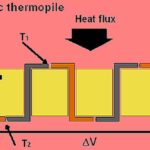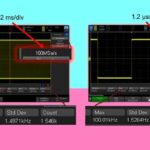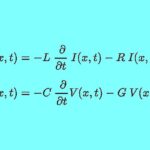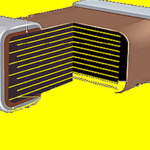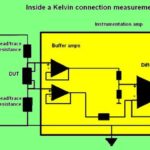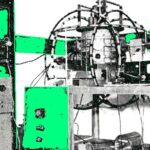William Herschel was a gifted musician and composer who by chance obtained a 10-foot long, 30-inch reflecting telescope from the estate of his deceased friend, a violinist. Due to damage in moving it, he had to rebuild the instrument. This drew him into telescope making and then astronomy. He also discovered infrared radiation by placing […]
Making better oscilloscope measurements through horizontal and vertical scaling
Early oscilloscope models were primitive by modern standards. Among the first major innovations was triggered sweep, introduced by Tektronix just in time for the post-World War Two electronics boom. This improvement in waveform imaging synchronized successive periodic waveforms to create a coherent image, based on a uniform level along the rising edge or another user-defined […]
What are the telegrapher’s equations?
You can thank Oliver Heaviside (actually a short, thin man), for the telegrapher’s equations (or just telegraph equations). These are probably better known as the transmission line equations. They are actually a pair of coupled, linear partial differential equations that describe the voltage and current on an electrical transmission line with distance and time. RF […]
Can you tell the difference between an electrolytic and super capacitor?
If you disassemble an electrolytic capacitor and a supercapacitor, you might have trouble distinguishing differences between the two unless you had a practiced eye. Physically, the two can resemble each other though their electrical performance differs drastically. First a few basics. Ordinary capacitors, of course, are characterized by metal plates separated by a dielectric. In […]
How to screw up a capacitance measurement
Consider the task of performing a capacitance test using an LCR meter or a good multimeter such as the Fluke 287 True RMS Multimeter. If the capacitor under test is an electrolytic or film-based device, the main measurement concern is often just ensuring the capacitor is not under power or doesn’t have a stored charge–electrolytics […]
Why won’t it work? A look at antiresonance
A clock generator generally consists of a resonant circuit and an amplifier. Resonance occurs in an electrical circuit when XL = XC. At this juncture, the imaginary component of the transfer function is zero. A resonant circuit oscillates at a specific frequency. Like certain other electrical phenomena, it is capable of generating higher voltages or […]
The basics of Kelvin connections
It is difficult to obtain highly accurate readings of current and voltage in small resistances. The difficulty exists both in analog as well as digital meters. Part of the reason is that their sensor wires and fine probe points add unknown amounts of resistance to the measurement, potentially more than that of the device under […]
Things to know about multimeters
For years, ohmmeters have been integrated into the electrician’s multimeter. This is convenient, because ohms and volt are the most-performed measurements. Also, only a single instrument must be purchased and maintained. Multimeters are further subdivided into ac, bench-type multimeters and hand-held, battery-powered multimeters. The hand-held instruments are more convenient. Most often just grab your handheld […]
What’s all this Helmholtz coil stuff?
The Helmholtz coil was not devised to create a magnetic field, but to cancel it. The Helmholtz coil actually consists of two identical circular air-core coils, large enough to contain the work under study. The coils are situated along a common axis that extends through the experimental area. The distance between the coils is equal […]
Sorting out balanced cables and differential signaling
Lines carrying symmetric signals, i.e. those with opposite polarities but with equal amplitudes on each line are commonly called balanced. But the correct term is differential signaling. While balanced lines and differential signaling may be used together, they are actually quite different. The key point that distinguished balanced lines from single-ended lines is that both […]
